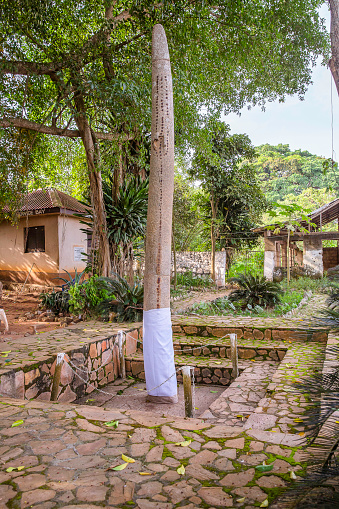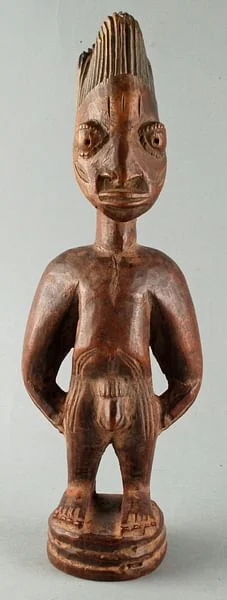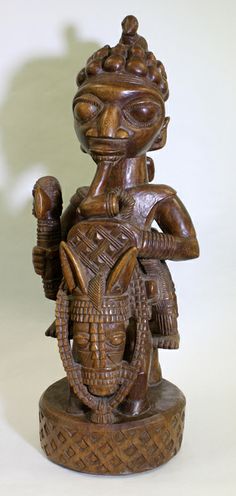The Yoruba historical background had its origin in the Oyo Empire, where the forefathers of every Yoruba lineage earned their pride, culture, history, and powers. Every Yoruba indigene or family at that moment had a player who had a history with the Yoruba empire.
The Oyo, which is the southwestern part of Nigeria, was dominated between 1650 and 1750 in the early 11th century. The Oyo’s main settlements were in and around Ife, the kingdom’s historic capital; Old Oyo (called Oyo Ile or Katunga); Kusu; and Igboho. The region developed from 1450 CE onwards thanks to trade with northern powers like Hausaland (15th-19th century CE) and, to the south, Portuguese sailing ships that sailed the West African coast. By the late 16th century CE, the British, French, and Dutch had joined the Portuguese in their quest for a piece of the lucrative regional trade.
The Role of Oranmiyan in the Oyo Empire
History has it that Oduduwa, a renowned Yoruba ancestor and hero, is said to have relocated to Ile-Ife and whose son became the first Alaafin, or ruler, of Oyo. Linguistic evidence implies that between 700 and 1000, two waves of immigrants arrived in Yorubaland, the second settling at Oyo in the open country north of the Guinea forest. Because of its advantageous trading position, natural resources, and the industry of its population, this second state rose to prominence among all Yoruba states.

Located to the east of Oyo, the King of Ile-Ife, who was a ruler alongside the people of the Benin kingdom between the 13th and 19th centuries, sent a craftsman with the name “Oranmiyan,” popularly known as Oranyan, who was the son of the founder of Ife, Oduduwa. Oranmiyan founded Oyo state, and also, through his sculptural skills, carved a granite column from Ife that stands 5.5 metres (18 feet) tall, called the “Opa Oranmiyan,” which to date has remained a remarkable staff.
The Expansion of the Oyo Empire
At first, Oyo was a tiny state in the early 16th century, helpless in the face of its northern neighbors, Borgu and Nupe, who invaded it in 1550. By the end of the century, however, Oyo’s authority had grown, which is thanks to the first and only female Alaafin of Oyo, Orompoto, who used the income generated by trade to develop a cavalry force and maintain a trained army.

With the advent of the slave trade, the Oyo kingdom benefitted mostly from the Savannah region’s continued surge in the environmental portions in the areas of rainforest, dry forest, savannah, and mangrove swamp. As a result of its prosperity during this period, Oyo started exploiting local resources like okra, yam, and palm oil, which also prompted the importation of goods like horses from the Mediterranean and the trading of kola nuts, pepper, gold, and slaves.
Slave Trade
Half of the slaves taken from Africa came from the southern coast of West Africa and the area controlled by the Oyo Empire, the Kingdom of Dahomey (1600-1904 CE, modern Benin), and the Kingdom of Benin became known as the “Slave Coast” (the “Gold Coast,” another lucrative trade hub, was further west). According to history, there are two significant reasons why the slave trade concentrated in these two parts (that is, Dahomey and Benin): the gross populated areas of Africa which the Europeans pegged on was the empire and secondly, the Oyo Empire, to an extent, the Kingdom of Dahomey, supplied the required command infrastructures to arrange the movement of slaves from the interior to the coast. And in exchange, the Oyo received European commodities that they could use or trade with other countries. Despite an oral tradition that downplays the Oyo Empire’s involvement in the slave trade, the Oyo Empire employed slaves far more than other governments in the region – many leaders in the administration and military, for example, were of slave descent.

Subsequently, the Old Oyo empire experienced an expansion in the southwest and in the savannah through the north, and also gained territories from its neighboring areas (Nupe and Borgu). Later, history had it that Nupe defeated Old Oyo in 1535 until some kings arose to revive it in 1610. Also, Oyo had experienced many other stumbling blocks in order to reach the peak. Examples are the Ijesha and Ekiti challenge with the empire as well as the Kingdom of Benin’s rivalry. Despite these blocks, Oyo took cultural ideas, lands, religion, and traditions from its rivals.
The Oyo Empire may have conquered the region, but a much larger power was steadily establishing itself far to the north. The northern Islamic nations had already expanded in the 18th century CE, having gone on a holy war to spread their beliefs. These incursions, which spread further south by the 19th century CE, severely disrupted Oyo’s trade and exposed the political system’s underlying flaws.
The Role of Alaafin in the Oyo Empire
The Oyo king, at the time called the “Alaafin,” had previously clashed with the state’s ruling council of elders, the Oyo Mesi, as well as the military commander, the Bashorun (who also led the Oyo Mesi). Throughout the 18th century CE, there was an ongoing conflict between those who favored peaceful trade and those who wanted military expansion. The Oyo Empire was a house of cards, waiting for the winds of change, because of this scenario and the loose control of vassal kingdoms.
Oyo was soon invaded by the newly risen Fon of Dahomey, and after 1800, it was captured by militant Fulani Muslims from Hausaland in the northeast, which the northern part of the empire was conquered to become the Fulani emirate of the Sokoto caliphate between 1804 and 1903.
The Transformation
The Yoruba people suffered greatly as a result of this political deterioration, as they had previously escaped being made slaves but were now by far the bulk of those caught and sold to the Americas until the slave trade was abolished in the 1850s. In 1861, the region that is now Nigeria became a British colony, and in 1900 CE, the protectorates of North and South Nigeria were established. In 1914, the two protectorates merged to form a federation, which won independence in 1960.





